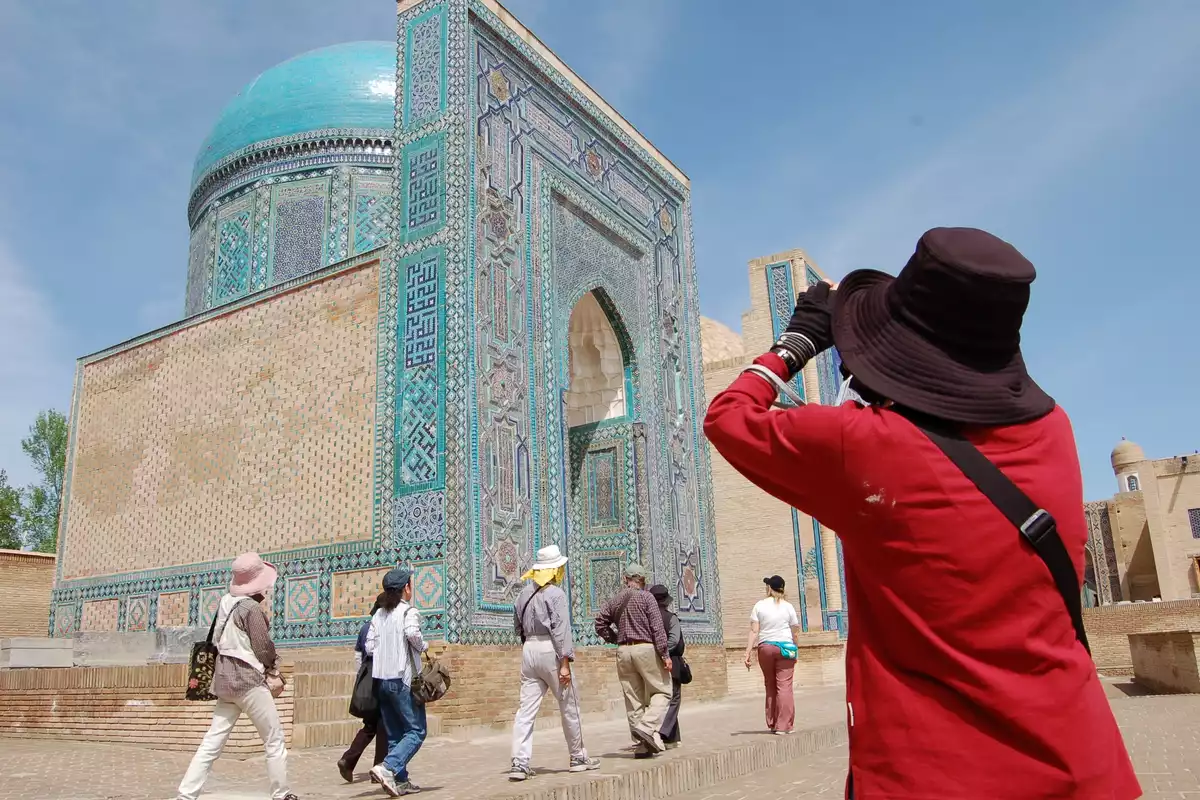
Photo: gov.uz
Most seasons of Survivor, the most successful US reality television show in the 21st century, are set in a remote locations, far removed from civilization.
The Russian knock-off of the program, now in its second season after a wildly popular debut, also strives to place contestants in an exotic locale, forced to endure outside their comfort zones, The Caspian Post reports citing Eurasient.
The show is called Surviving in Samarkand.
The title is a tacit admission that for Russians, Samarkand - a fabled Silk Road city in Uzbekistan, and an urban center possessing a far longer and richer history than Moscow - is still seen as an alien environment, lacking familiar amenities. Such attitudes are a holdover from the Soviet era, when Slavs in the Russian heartland generally regarded all of Central Asia as backwater.
But the program is not only a reflection of long-standing stereotypes. It is also a sign of changing attitudes. Russia’s unprovoked attack on Ukraine in 2022 prompted the United States and European Union to impose sanctions that have made it far more difficult for Russians to vacation in Western locations, forcing them to explore new tourist destinations. Uzbekistan in particular, and Central Asia more broadly, has been among the locations that has benefited the most from shifting Russian tourism patterns.
The number of Russian tourists visiting Uzbekistan over the past three years has increased 53 percent from over 567,000 in 2022 to 873,000 last year. Tajikistan has experienced an even higher growth rate, although the overall number of Russian visitors in 2024 was about 334,000. Meanwhile, Russian visitors to Kyrgyzstan have remained steady, in the range of 640,000 annually, while Kazakhstan has experienced a decline in Russian tourists over the past few years, according to official statistics.
In Uzbekistan, the surge in Russian visitors is helping spur an expansion of the tourism industry. The country attracted 10 million foreign tourists in 2024, generating $3.5 billion in revenue, and officials aim to attract 15 million visitors annually within the next five years. To meet that goal, the government is investing billions of dollars to build tourist infrastructure, refurbish historic sites and buy passenger jets to ferry foreigners to Uzbekistan.
According to a World Economic Forum’s Travel and Tourism Development Index 2024, Uzbekistan ranked 78th out of the 119 nations surveyed for tourism infrastructure. Yet, the WEF data also shows that the country’s tourist industry has made the most advances of any country over the past five years.
Russians are not the only neighbors discovering Central Asia. The numbers for Chinese tourists are also rising fast. Kazakhstan, for example, experienced nearly a doubling of Chinese visitors in 2024 with a total of 665,000, up from 367,000 the previous year. Chinese visitors spent spent $307 million in Kazakhstan last year, or an average of $470 per person, according to government statistics.
Kyrgyzstan, which recorded only 8,800 Chinese tourists in 2022, accommodated 128,000 visitors last year. A similar growth pattern holds for Uzbekistan and Tajikistan.
Central Asian tourism has benefited from a relaxation of visa requirements in recent years. Kazakhstan and China introduced a reciprocal 30-day visa free regime in 2023. In late 2024, Kyrgyzstan unilaterally allowed group visits by Chinese tourists without a visa for up to 21 days. Uzbekistan has allowed Chinese citizens to visit without a visa for up to 10 days since 2021, and Tajikistan since March 2024 has allowed visits for up to 14 days without a visa for Chinese citizens older than 55.
Share on social media